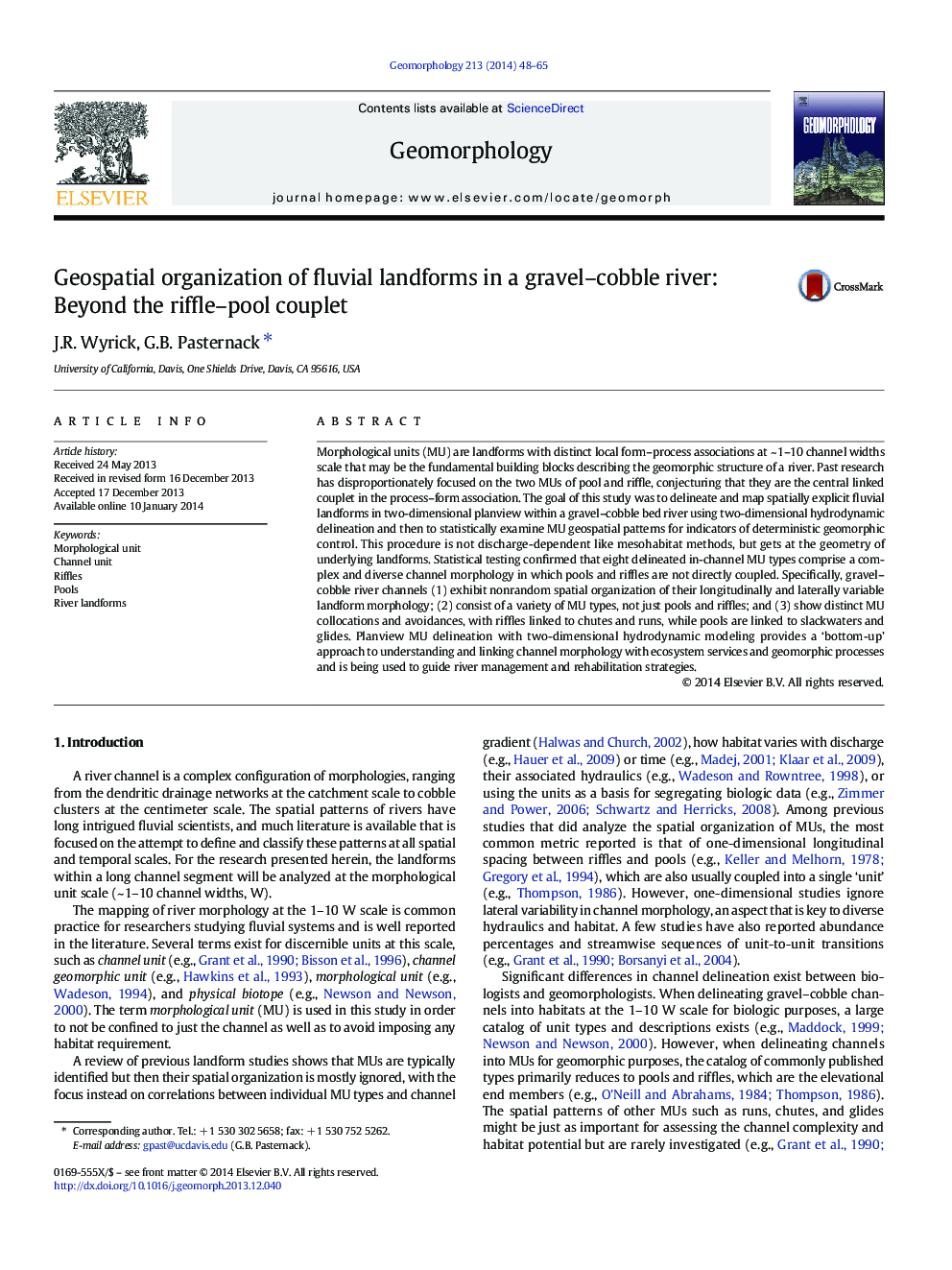| Article ID | Journal | Published Year | Pages | File Type |
|---|---|---|---|---|
| 6432488 | Geomorphology | 2014 | 18 Pages |
â¢Geospatial organization of fluvial landforms analyzed for gravel-cobble riverâ¢Morphological units exhibit nonrandom, nonuniform spatial patterns.â¢Pools and riffle were not coupled and each was associated with other unit types.â¢Gravel-cobble rivers exhibit lateral and longitudinal landform variability.
Morphological units (MU) are landforms with distinct local form-process associations at ~Â 1-10 channel widths scale that may be the fundamental building blocks describing the geomorphic structure of a river. Past research has disproportionately focused on the two MUs of pool and riffle, conjecturing that they are the central linked couplet in the process-form association. The goal of this study was to delineate and map spatially explicit fluvial landforms in two-dimensional planview within a gravel-cobble bed river using two-dimensional hydrodynamic delineation and then to statistically examine MU geospatial patterns for indicators of deterministic geomorphic control. This procedure is not discharge-dependent like mesohabitat methods, but gets at the geometry of underlying landforms. Statistical testing confirmed that eight delineated in-channel MU types comprise a complex and diverse channel morphology in which pools and riffles are not directly coupled. Specifically, gravel-cobble river channels (1) exhibit nonrandom spatial organization of their longitudinally and laterally variable landform morphology; (2) consist of a variety of MU types, not just pools and riffles; and (3) show distinct MU collocations and avoidances, with riffles linked to chutes and runs, while pools are linked to slackwaters and glides. Planview MU delineation with two-dimensional hydrodynamic modeling provides a 'bottom-up' approach to understanding and linking channel morphology with ecosystem services and geomorphic processes and is being used to guide river management and rehabilitation strategies.
